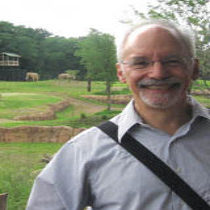Landscape Architecture for Landscape Architects › Forums › GENERAL DISCUSSION › Educational Prairie for High School
- This topic has 1 reply, 5 voices, and was last updated 13 years, 9 months ago by
 Jordan Lockman.
Jordan Lockman.
-
AuthorPosts
-
October 15, 2011 at 4:04 pm #159707
Benjamin Payne
ParticipantI’m currently a senior in high school. My school in Illinois has had a small prairie on its grounds for a few decades, but it has never been used as a true educational prairie. My biology teacher wants to revamp the prairie so that it can engage elementary through high school students in learning experiences. Seeing that I’m planning on studying landscape architecture in college after I graduate this year, I think that helping design, plan, and implement this project would be a great way to get my feet wet in the field. I just don’t know where to start. Any suggestions, advice, or ramblings-on you may have would be greatly appreciated. Thanks!
October 16, 2011 at 4:31 am #159713 Jordan LockmanParticipant
Jordan LockmanParticipantThis would be a great opportunity to explore the design process.
Maybe you can even do a little research on design methods and see what works best for you.
In general for a basic design process
1 and 2 can run concurrently in your case since you already have a site.
1. Program(create a list/brainstorm of goals that you hope to accomplish, establish budget, create goals in general)
Start with thinking of ways that you can engage fellow students? is it a plant ID garden, an experiment area, signage, play area, etc.
2. Inventory/Analysis – Survey record the site, what is there, what is the existing conditions, what is currently planned and what could be. Identify potential positives and negatives of different parts of the site. Good views, areas to be screened, etc.
3. conceptual/schematic design – at a broad scale masterplan the site. Layout things in a very general way this could be a lot of options to find the one that feels the best, gives the best circulation, allows the best layout for all desired goals.
4. refine designs start to focus on more and more details.
5. Final designs/construction drawings – focus in on areas that you may actually want to develop. Create plans that can be built from. Include specific plants, materials, dimensions, final budgets, etc.
This is an oversimplified and quick list so please do a little looking into design methods to see how you can best brainstorm etc. everyone is a little diff, but all based on something similar to what is above.
Feel free to ask more questions.
Jordan
October 16, 2011 at 11:38 am #159712 Trace OneParticipant
Trace OneParticipantright, Jordan hit it, Benjamin..
first step, survey (informally – walk it out with a gridded paper) the site, and figure out as many of the existing conditions you can. (how many and what kinds of plants, rocks, water, slope..just go for it..)
While you are doing that, you are thinking about what you want to do, what image is in your head for the final experience..A sitting experience, watching the world go by? A learning walk? both..? whatever..It helps a lot (I think) to be looking through books of pictures, to give you examples your brain can work with..Besides, doing that is really fun.
Next, draw on top of your existing conditions maps, plans for what you want the thing to be. be loose. Use colored markers. Have fun.
you can even stop there..
Remember, if you want to re-create a prairie (google that, it has been done quite often, you can find concrete recipes for putting together a prairie, I am sure), you need to really work up the soil matrix, and the drainage, before you even think about plants, altho one springs from the other, so to speak..It is not easy..The prairies took thousands of years to form their incredibly deep soils..
and finally, take a few moments, every day, to pay homage to the earth, because that is what it is all about, ultimately..I just mean think about it, every day, for a few minutes..IMHO!
October 17, 2011 at 11:42 pm #159711Benjamin Payne
ParticipantThanks for the advice! Does anyone know if tallgrass prairie can coexist with shortgrass prairie?
October 18, 2011 at 1:25 am #159710Tanya Olson
ParticipantYep – plant tall grasses in low areas and short grasses on top of hills with little water – this occurs naturally in the midwest, though the short grasses aren’t as short there as they are out here past the 100th meridian.
October 18, 2011 at 12:26 pm #159709 Rob HalpernParticipant
Rob HalpernParticipantI wouldn’t overlook the input of the teachers and perhaps the students. How could you possibly be the one (and only) to best determine how the prairie might engage elementary through high school students in learning experiences? This is not simply a landscape design problem, this is an education and perhaps social challenge. Bring in the people who can offer some insights on what works, what doesn’t and what they want. They are the client, after all, and the solution begins with them
Consider this an addition to Jordan’s Point #1
Come to think of it, nothing would likely better engage other students then figuring out how to improve this landscape and doing it as a project. If you are the only one who gets engaged in it then the project has failed. But for it to work, someone has to be the one to organize and pull it all together! So your role is vital
October 18, 2011 at 4:25 pm #159708 Jordan LockmanParticipant
Jordan LockmanParticipantLove the idea of getting input from students and client. It is amazing how well things go when people have ownership of them.
-
AuthorPosts
- You must be logged in to reply to this topic.


